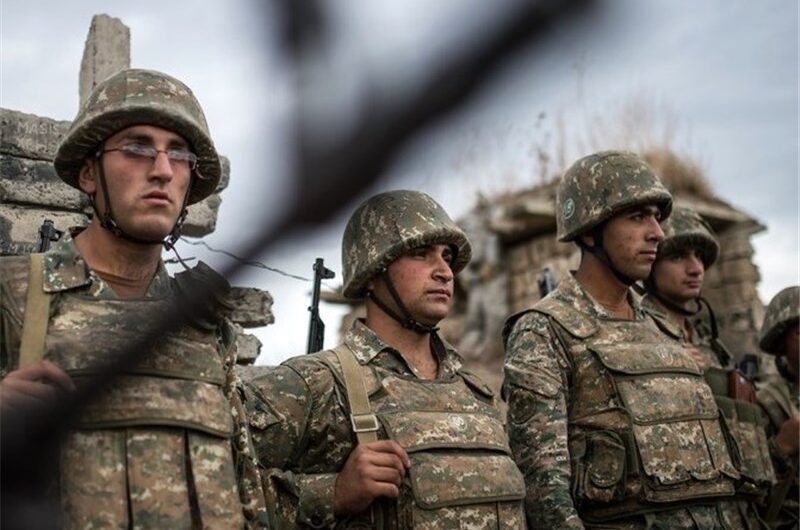Words by Matteo Marchionni
On 9 November, Russian President Vladimir Putin announced that he had mediated talks between Armenian Prime Minister Nikol Pashinyan and Azerbaijani President Ilham Aliyev. The outcome was the signing of a peace treaty between the two sides, which has ended the Nagorno-Karabakh conflict.
The ceasefire became effective from 00:00 Moscow time on 10 November, and comes after six weeks of renewed armed confrontation between Armenia and Azerbaijan over the region of Nagorno-Karabakh.
The announcement of this latest peace treaty was met with many protests in Armenia. Just a few hours after its revelation, hundreds of angered citizens stormed the Prime Minister’s official residence as well as the country’s parliament in Yerevan, calling for Pashinyan’s resignation.
The main reason for this is that the deal states both sides must recognize as legitimate the territories they each currently occupy. This means recognizing Aliyev’s forces’ valuable land gains into the Republic of Artsakh over the past six weeks as part of Azerbaijan. This is why many Armenians see the agreement as favourable to Baku.
Further outrage was sparked by the fact that as part of the deal, Armenia must return the Kalbajar District, the Agdam District, and the Lachin District to Azerbaijan by November 15, November 20, and December 1 respectively, as well withdraw its forces from Nagorno-Karabakh.
As a consequence of the treaty then, many Armenians are being forced to abandon places they have inhabited for decades. Some are even deciding to set fire to their homes before leaving them in the hands of the Azerbaijanis. One person said this about his house: “In the end, we will blow it up or set it on fire, in order not to leave anything to Muslims.”
Nikol Pashinyan described his decision as “unspeakably painful for me personally and for our people.” But he argued that it was a necessary one, and “the best possible solution to the current situation,” as Azeri forces had captured Shusha and were slowly closing on the most important city in Nagorno-Karabakh, Stepanakert.
Ilham Aliyev took to Twitter to share his comments about the deal: “This statement has historic significance. This statement constitutes Armenia’s capitulation. This statement puts an end to the years-long occupation. This statement is our Glorious Victory!”
Beyond having provided mediation Armenia and Azerbaijan, Russia will also have a physical role in assuring that peace between the two sides is maintained. As part of the ceasefire agreement, the Russian Federation will in fact send almost two thousand troops to control the Lachin corridor, the crucial passage which connects Armenia and Artsakh, for at least the next five years.
Turkey’s Foreign Minister Mevlut Cavusoglu expressed contempt for the signing of the peace deal: “our dear Azerbaijan achieved significant gains in the field and at the [negotiating] table.” Ankara has been heavily supportive of Azerbaijan during the conflict, by supplying it with weapons as well as sending mercenaries recruited from Syria to fight alongside Aliyev’s troops.
The Islamic Republic of Iran, which borders both Armenia and Azerbaijan, demonstrated satisfaction with the signing of the deal. President Hassan Rouhani said: “we will spare no efforts for de-escalating the tensions and establishing stable and fair security in that region for the sake of stability and peace.”
With Azerbaijan having acquired new territories and Armenia having lost some, the former country has benefited the most from the deal. Though the treaty has put an end to the armed confrontation between the two countries, there is a chance that war may ignite again in the future, as this is the third instance in which the two states have signed a ceasefire to end combat in Nagorno-Karabakh.
The zone has been contested between the two nations since the decline and later fall of the Soviet Union. Up until 1988, when the first conflict broke out, both populations had lived relatively peacefully under the jurisdiction of the USSR. Soon after, in 1992, the United Nations officially recognized Nagorno-Karabakh as part of the Republic of Azerbaijan. This inevitably exacerbated tensions and fuelled the war, which ended with the signing of the first ceasefire in 1994.
But the origins of the dispute over Artsakh date to the early 1920s, when Joseph Stalin decided to assign the latter territory to what was the Azerbaijan Soviet Socialist Republic, even though over 90% of its inhabitants were Armenians. In fact, in terms of ethnicity, the land of Nagorno-Karabagh has historically been occupied by an overwhelming Armenian majority.
The consequences of Stalin’s decision remain influential to this day, with tensions still high between the two sides even after the signing of this latest deal, suggesting that the long-standing dispute has not yet expressed its final word.
Picture Credit: Tasnim News Agency





